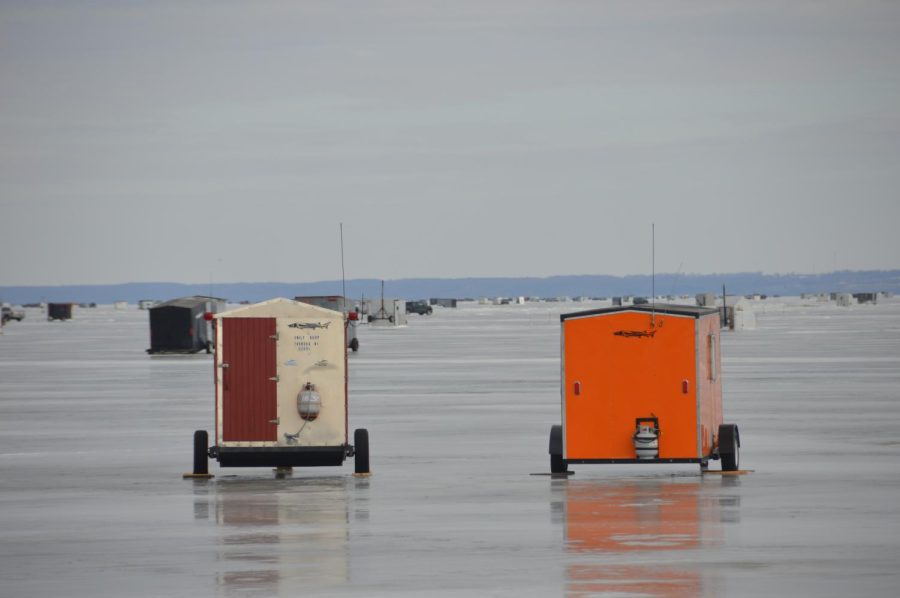Sturgeon spearing to begin Feb. 11
Advance-Titan File Photo — Ice shanties line the surface of Lake Winnebago in February of last year.
February 8, 2023
The Wisconsin Department of Natural Resources announced that the sturgeon spearing season will open Feb. 11 at 7 a.m. on the Winnebago chain of rivers and lakes.
The Winnebago chain has one of the largest lake sturgeon populations in North America and once a year, the DNR allows sturgeon spearers a chance to harvest the largest and oldest fish species in Wisconsin. The spearing season lasts from 7 a.m. to 1 p.m. for a maximum of 16 days (Feb. 26) or until any of the predetermined harvest caps have been met.
This year, the cap on sturgeon harvesting on Lake Winnebago has been set at 280 for juvenile females, 714 for adult females and 985 for all males. The chain of lakes that make up the “Upriver Lakes” have a cap of 70 juvenile females, 79 adult females and 246 males. The Winnebago system of waterways has a cap of 350 for juvenile females, 793 for adult females and 1231 for males.
If the harvest caps are met early, the DNR will alert spearers on the Winnebago System sturgeon spearing webpage.
The length of the spearing season is usually affected by the water by the water clarity of Lake Winnebago and the Upriver Lakes. According to the DNR, warmer temperatures this winter have prevented biologists from conducting water clarity assessments this week due to the safety of the ice. Data from the DNR shows that right now there is an average of 13.0 feet of water clarity around Lake Winnebago with mostly clearer water on the eastern shores and on shores along the west side of the lake.
According to the DNR, “With better water clarity this year, we should see a good harvest, though the warm weather could deteriorate ice conditions which may reduce spearing success.”
The DNR also reported that they recorded low chironomid densities, which are lake fly larvae or red worms, and this may impact sturgeon numbers around Lake Winnebago.
Once a spearer has successfully speared a sturgeon, the tag on the carcass must be validated by tearing of the bottom portion and the fish must be brought to an official registering station where it must be registered by 2 p.m. on the day it was speared.
Sturgeon harvested from Lake Winnebago must be registered at one of the registering stations on Lake Winnebago. Any sturgeon harvested from Poygan Lake, lake Butte de Morts or Winneconne lakes must be registered at one of the Upriver Lakes registration stations.
The DNR reminded spearers that no ice is 100% safe and that spearers should check with local fishing clubs and conservation groups for local ice condition information because the DNR does not monitor ice conditions.
Eligible spearers must have registered for a sturgeon license before Oct. 31 for spearing on Lake Winnebago and Aug. 1 for the Upriver Lakes.
The first modern sturgeon fishing season on the Winnebago system of lakes started in 1932 and is one of only two locations in North America where lake sturgeon can be harvested with a spear.
According to the DNR, “For many, the season is defined by the time spent with loved ones, not the harvesting of a fish. The social and traditional aspects of the sport keep most people coming back year after year.”















